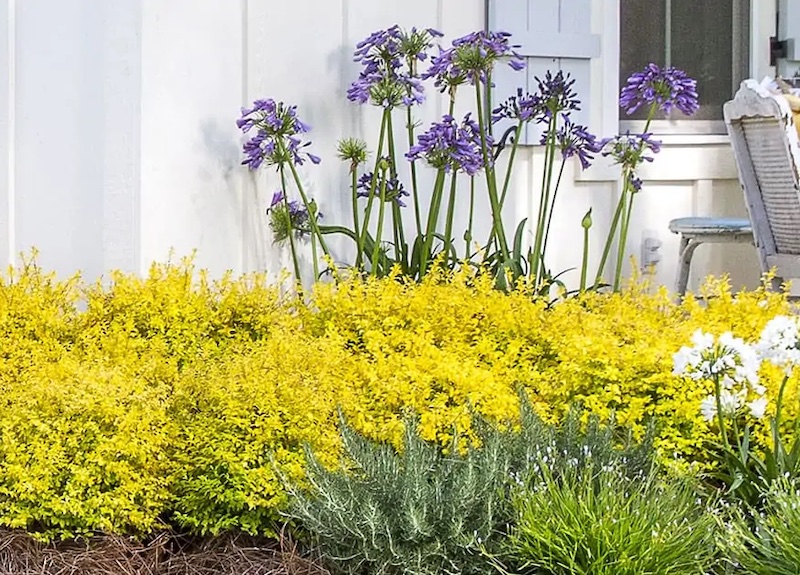Expanding Agapanthus: A Complete Overview to Beautiful Blooms
Expanding Agapanthus: A Complete Overview to Beautiful Blooms
Blog Article
Grasping the Art of Agapanthus Care: Necessary Steps for Healthy And Balanced Development and Vivid Blooms
In the world of horticulture, the cultivation of agapanthus stands as a satisfying venture for those that seek to support these classy blooming plants. From choosing the best variety to understanding trimming methods, the trip in the direction of growing thriving agapanthus plants is complex and holds the essential to opening the complete potential of these botanical treasures.

Picking the Right Agapanthus Variety

When picking the best Agapanthus variety for your yard, think about factors such as climate viability, blossom shade, and growth routine. Agapanthus, frequently called Lily of the Nile or African lily, can be found in a range of colors varying from shades of purple and blue to white. Select a blossom color that matches your existing yard combination to develop a harmonious landscape. In addition, consider the environment in your region to make certain the Agapanthus variety you choose can thrive in your details conditions. Some varieties are much more tolerant of cool temperatures, while others like warmer climates. Comprehending the development behavior of different Agapanthus ranges is critical for correct placement within your yard. Some selections have a clumping development routine, ideal for containers or boundaries, while others have an even more dispersing nature, suitable for ground cover or mass growings. By thoroughly examining these aspects, you can choose the excellent Agapanthus range to improve the beauty of your garden.
Suitable Growing Problems
Taking into consideration the optimal ecological needs is vital for effective Agapanthus growing. Agapanthus plants are sensitive to cool temperatures and must be protected from frost during winter months.
To make certain healthy growth and vivid blossoms, plant Agapanthus bulbs at a deepness of about 2-4 inches and area them 8-12 inches apart. Adding organic matter, such as garden compost, to the soil can enhance drainage and fertility, advertising durable root development. Mulching around the base of the plants helps keep wetness and reduces weed development. Regular watering is crucial, specifically throughout the growing period, to maintain the soil constantly wet yet not waterlogged.
Watering and Feeding Tips
Maintaining proper moisture levels and providing vital nutrients are essential components in the treatment program for Agapanthus plants. When it comes to watering Agapanthus, it is important to strike a balance. These plants favor regularly moist soil however are vulnerable to root rot if overwatered.
Feeding Agapanthus is crucial for advertising healthy and balanced growth and prolific blossoms. Use a well balanced fertilizer, such as a 10-10-10 formula, in the early spring as brand-new development emerges. By following these watering and feeding suggestions, you can guarantee your Agapanthus plants flourish and produce vibrant, long-lasting blossoms.
Pruning Techniques for Agapanthus
Pruning Agapanthus plants at the ideal times and with proper techniques is essential for preserving their health and wellness and promoting optimum development and flowering. The excellent time to look at these guys prune Agapanthus is in late winter or very early springtime before new growth arises.
Deadheading spent blossoms can also reroute the plant's energy into generating even more blooms instead than setting seeds. If you want to gather seeds for propagation, leave some blossoms to dry and fully grown on the plant.
Bear in mind to utilize tidy, sharp tools to make specific cuts and lower the risk of introducing diseases. Agapanthus. Regular pruning will certainly assist maintain your Agapanthus looking neat and healthy and balanced while making sure a bountiful display screen of gorgeous flowers
Managing Usual Pests and Conditions
After making sure correct trimming techniques for Continue Agapanthus, it is necessary to resolve typical insects and conditions that can impact the wellness and vigor of these plants. Agapanthus plants are normally hardy yet can still come down with specific problems. One usual pest that impacts Agapanthus is the Agapanthus gall midge. This tiny, orange fly lays its eggs in the foliage, resulting in altered growth and blossom buds that stop working to open. To fight this parasite, trim and ruin any type of affected plant parts and consider using insecticidal soap.
An additional typical problem is fungal leaf place, which provides as dark lesions on the leaves. To stop fungal diseases, guarantee excellent air blood circulation around the plants, prevent above watering, and remove any type of contaminated leaves quickly. Additionally, Agapanthus plants can experience origin rot if they are grown in poorly draining dirt. To stop this, plant Agapanthus in well-draining soil and prevent overwatering. By being attentive and taking prompt action versus diseases and bugs, you can help your Agapanthus plants prosper and generate dynamic flowers.

Conclusion
In final thought, grasping the art of agapanthus treatment entails picking the right range, supplying excellent planting conditions, correct watering and feeding, proper pruning techniques, Learn More and attending to common insects and illness. By complying with these necessary steps, you can make sure healthy and balanced development and lively blooms for your agapanthus plants. Bear in mind to consistently check and maintain your plants to advertise their total wellness and long life.
To make sure healthy and balanced growth and dynamic blossoms, plant Agapanthus bulbs at a depth of about 2-4 inches and space them 8-12 inches apart. By complying with these watering and fertilizing ideas, you can guarantee your Agapanthus plants thrive and generate dynamic, resilient flowers.
One usual pest that affects Agapanthus is the Agapanthus gall midge. Furthermore, Agapanthus plants can experience from origin rot if they are grown in badly draining soil. By complying with these necessary actions, you can make certain healthy and balanced growth and lively blooms for your agapanthus plants.
Report this page